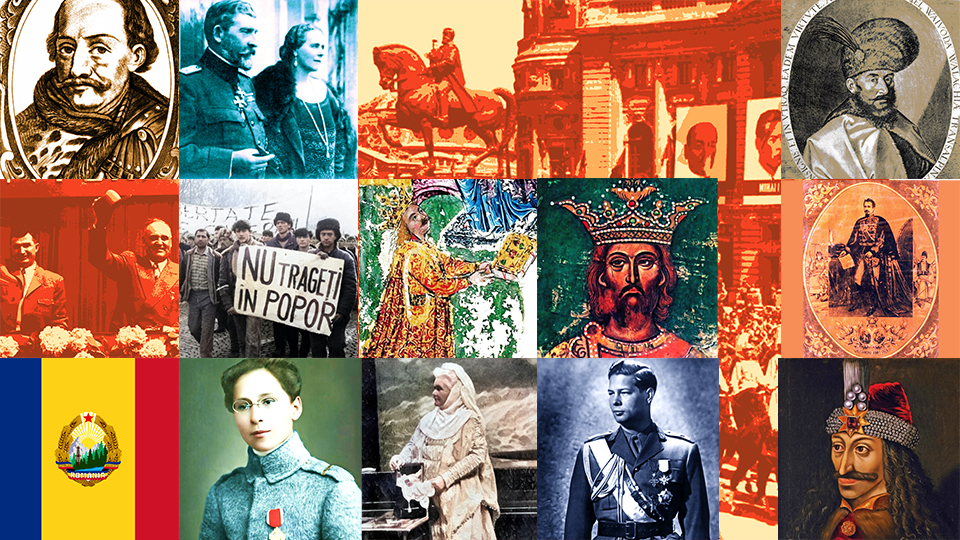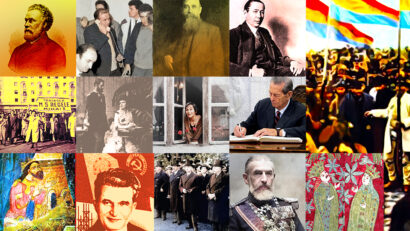The Romanian Academy Library between 1948 and 1989
An article, which delves into the history of this prestigious Romanian institution

Steliu Lambru, 20.10.2025, 14:00
Holder of over 14 million pieces, the Romanian Academy Library boasts the most valuable volume of documents in Romania. It was founded back in 1867, one year after the foundation of the Romanian Academy in 1866, and for roughly 160 years it went through changes influenced by the history’s ups and downs.
Up until 1918 the library had seen donations from all book and document lovers, which thus made an essential contribution to the birth of Romania’s most important cultural institution at that time.
After 1918, upon the emergence of Greater Romania, the Romanian Academy grew in importance concurrently with the new state. It integrated archives and book collections as well as documents kept in the Romanian territories, which joined the country that year.
The history of the Romanian Academy Library followed that of the mother-institution, and at a higher level that of Romania’s. Periods of prosperity alternated with darker ones both from the viewpoint of its mission and the people’s destiny.
Historians are dividing the library’s history taking into account the reference years of the past two centuries. The first period is the one between 1867 and 1918, the second is the period between the two world wars, also known as the interwar period, between 1918 and 1940, the third between 1940 and 1948, the fourth, the communist period up until 1989 and the fifth after 1989 until the present day.
The institution has recently launched three massive volumes dealing with its history between 1945 and 1989 and the president of the Romanian Academy, Medieval historian Ioan-Aurel Pop, was one of the attendees.
Ioan-Aurel Pop:” Next year the Romanian Academy will celebrate 160 years. Are they many, are they few, who knows? They are few if compared to eternity but they are many for our human history and also fruitful years. Many people believe the Academy Library is one institution and the Romanian Academy another institution. But for me, the Library is the Academy itself. And the other way around, the Romanian Academy is the Library. Without this wealth, which is actually Romania’s cultural heritage stored here, we wouldn’t have anything. The Library’s life began in 1867, a year after the foundation of the Literary Society, the ancestor of the Romanian Academy, under the 1879 law, when it was declared an independent institution, capable of appreciating values.”
The period between 1948 and 1989, depicted in 1868 pages, was an extremely difficult one, the most difficult in its 160-year history. It was a period, which meant the dismantling of the former Academy and the opening of a new one, in line with everything that meant the communist regime of the time: the Academy of the Romanian People’s Republic (RPR), in 1948 and the Academy of the Romanian Socialist Republic (RSR) in 1965. The new RPR Academy was actually the institution’s cleansing of its valuable academicians, many of whom died in the prisons they were sent to. Its sequel, the RSR Academy, toed the line of the socialist party and state and the generalized institutional conformism.
Ioan-Aurel Pop said the volume depicting the history of the years 1948-1989 also mentioned what was good in that difficult period.
Ioan Aurel Pop:” The presentation of these books shows that values were also being promoted; fundamental errors were also being made, or various orders issued by the communist government. Those years were famous for the secret books, books, which are now available again. In a democratic world, we don’t fight books, we don’t label books as forbidden as some are trying to in some areas nowadays. This is proof of a totalitarian regime. There were the so-called ‘secret books’, forbidden books, but librarians were working too, you know, in keeping with a tradition from Ion Bianu onward.”
The first volume comes with a series of relevant themes. The authors have covered the transition from the old Academy to the new one, the times ahead, the book collections, the press printed in more than four decades, the secret books, and the bibliographic activity of those years. The second volume is also an album. The authors are proposing the collection of manuscripts, historic documents and rare books in the period between 1948 and 1989. 637, out of the total 656 of its pages, include facsimiles of the documents, which entered the possession of the institution in that period, documents regarding both Romania’s history and universal history.
The third volume brings together other five themes: the stamp cabinet, the history of a photo collection, the map cabinet, the music cabinet as well as the numismatic and medals cabinet. This last theme means the restitution of the public memory of a name extremely important for the Romanian Academy Library, that of collector and donor Constantin Orghidan. Obviously the three volumes are abounding in illustrations, but the third volume’s piece de resistance is the reproduction of a photo taken by Carol Popp of Szathmari back in 1865, part of the photo cabinet collection. Under a suggestive title ‘A view from the Colțea tower’ it depicts the Romanian capital that year. The original photo is 30 centimeters wide and three meters long.
(bill)





























